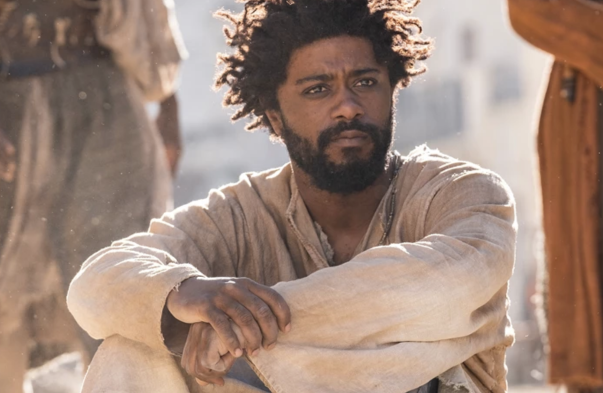By Peter T. Chattaway –
Jeymes Samuel’s anachronistic biblical epic nods to classics like “Ben-Hur” and “Life of Brian”—and ends with a surprisingly earnest view of Christ.
Out with the superhero movies, in with the biblical epic? From Journey to Bethlehem to The Chosen’s fourth season and Martin Scorsese’s recent announcement that he’ll start shooting a movie based on Shūsaku Endō’s A Life of Jesus later this year, Jesus movies are multiplying. Maybe, just maybe, 2024 will even be the year that Terrence Malick finally finishes editing his long-gestating Jesus project, The Way of the Wind.
In the middle of all this is The Book of Clarence, which—it seems safe to say—offers a perspective on the New Testament you won’t get from more devotional or high-concept films. Inspired by movies as different as Ben-Hur and Monty Python’s Life of Brian, and featuring a majority-Black cast, Clarence tells a sometimes epic, sometimes humorous story that is not quite about Jesus himself.
Focused on a fictitious character who lives just to the side of the greatest story ever told, the film is written and directed by Jeymes Samuel, also known as The Bullitts, the rapper turned filmmaker who made waves a few years ago with the Black Western The Harder They Fall. That film, as stylized as it was, was widely touted as a “corrective” to the Western genre and to popular perceptions of the past, drawing attention to real-life outlaws and lawmen who had largely been neglected by previous filmmakers.
The Book of Clarence, in American theaters Friday, has a somewhat different agenda. Here, Samuel is indulging his love of classic Bible epics while filtering the genre through his own experiences as someone who grew up in “the hood” (i.e., a mostly Black public housing development in London).
“Clarence is your everyman,” Samuel told Esquire. “Clarence is literally just a dude in the hood, through the eyes of which we look at that era and learn stories.” The Book of Clarence may be set in Jerusalem in A.D. 33, but the world of the film is playfully anachronistic, with gladiators, chariots, and crucifixions existing side-by-side with nightclubs, weed dealers, and hair salons.
